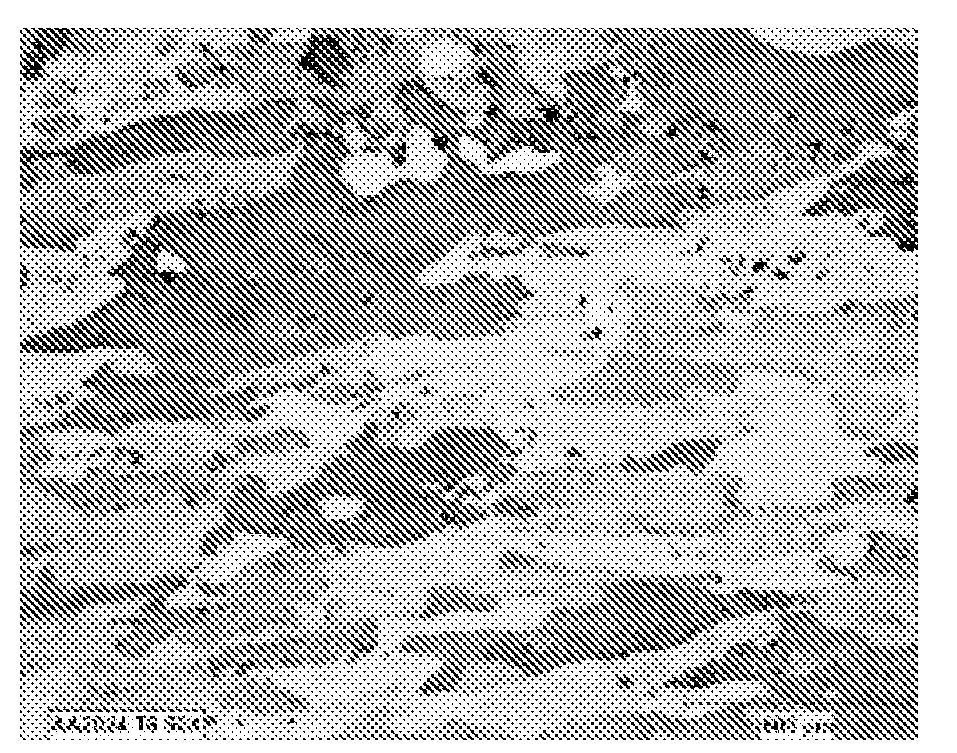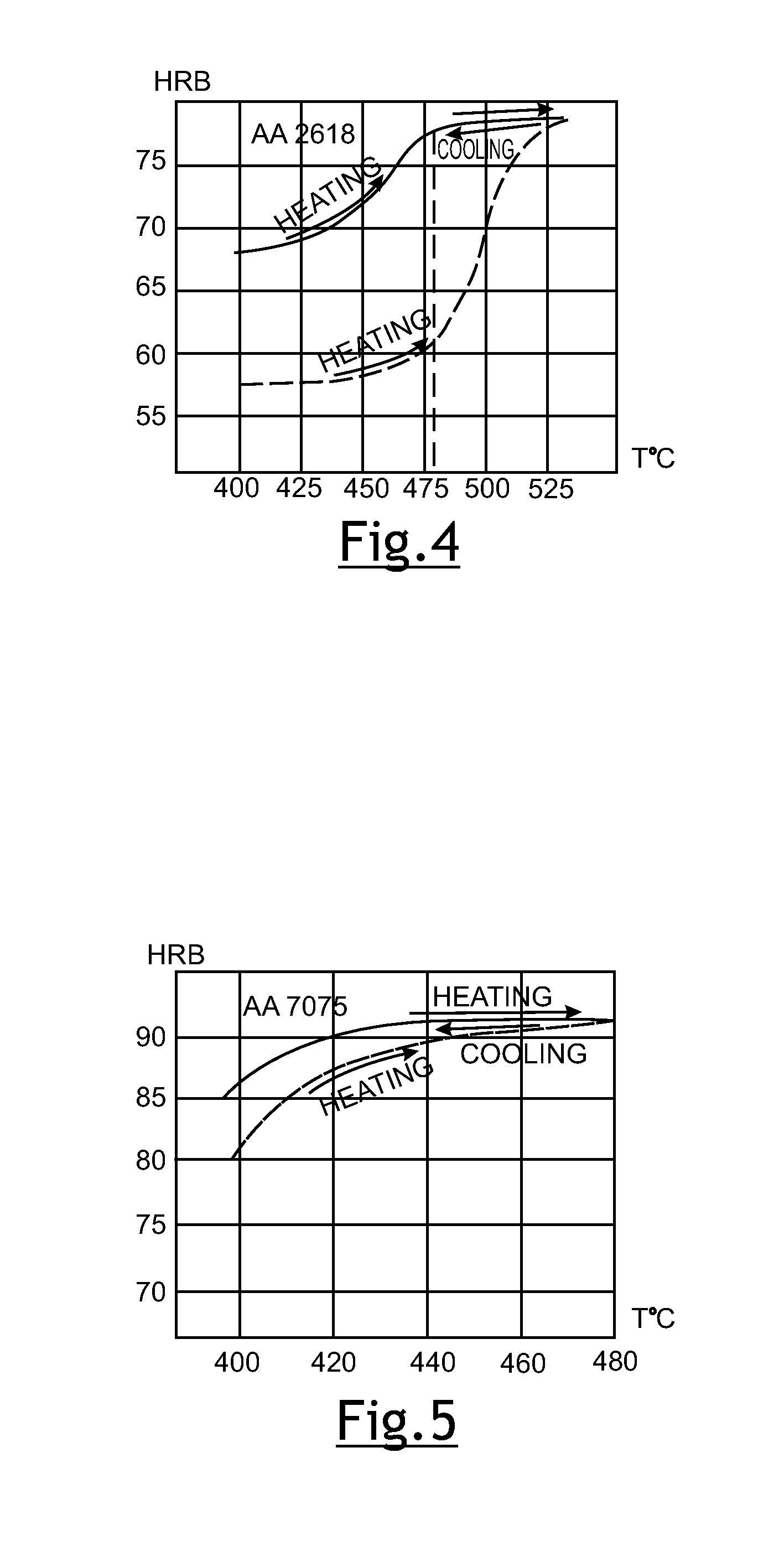Hot thermo-mechanical processing of heat-treatable aluminum alloys
a technology thermo-mechanical processing, which is applied in the field of thermo-mechanical processing of heat-treating aluminum alloy, can solve the problems of insufficient ductility, toughness, fatigue and stress corrosion, and inability to apply to complex components, and achieve the effect of superior properties
- Summary
- Abstract
- Description
- Claims
- Application Information
AI Technical Summary
Benefits of technology
Problems solved by technology
Method used
Image
Examples
example i
[0051]Samples of aluminum alloy AA 2618 were processed for three different conditions. In a case of HTMP, samples were solution treated at a temperature 530° C. for 1 h, cooled to the temperature of 480° C. over a period of 40 minutes, then forged at mechanical press with the strain rate about 2 sec−1 and reduction 70%, water quenched in less than 2.5 seconds, and aged at temperature of 199° C. for 8 h. For comparison, the material was also processed via ITMP and T6 temper. For ITMP, samples were heated to the same forging temperature of 480° C. for 1 h, forged with the same strain rate 2 sec−1 and reduction 70%, immediately water quenched and aged at temperature of 199° C., 8 h. For T6 temper, samples were solution treated at temperature of 530 C. for 1 h, water quenched and aged at temperature of 199° C., 10 h. Results of structure characterization and mechanical testing are shown in Table 1.
TABLE IYieldUltimateElon-Average Stress,Tensilegation, Grain Size,ConditionMPaStress, MPa%...
example ii
[0052]For HTMP, samples of aluminum alloys AA 2024 were solution treated at a temperature 495° C. for 1 h, cooled to the forging temperature of 460° C. over a period of 30 minutes, then forged with strain rate 2 sec−1 and reduction 70%, immediately water quenched and aged at a temperature of 190° C. for 10 h. The material was also processed via ITMP and T6 temper. For ITMP, samples were heated to temperature of 460° C. for 1 h, forged with the same strain rate and reduction, water quenched and aged at a temperature of 190° C. for 10 h. For T6 temper, samples were solution treated at a temperature of 495° C., 1 h, water quenched and aged at a temperature of 190° C. for 10 h. Comparison of mechanical properties and grain sizes for three conditions is presented in Table II.
TABLE IIYieldUltimateElon-AverageStress,Tensilegation,Grain Size, ConditionMPaStress, MPa%micronsT641448313350ITMP2953781645HTMP409458143
example iii
[0053]Aluminum alloy AA 2026 was processed via HTMP and ITMP. In the first case, the samples were solutionized at a temperature of 495° C. for 1 h, cooled to the forging temperature of 460° C. over a period of 15 minutes, forged at the mechanical press with strain rate 2 sec−1 and reduction 70%, water quenched and aged at a temperature of 180° C. for 10 h. In the second case, samples were heated to a forging temperature of 460° C. for 1 h and then forged, quenched and aged similarly to HTMP samples. Testing results for both conditions are show in Table III.
TABLE IIIYield Ultimate Elon-Average Stress,Tensilegation, Grain Size, ConditionMPaStress, MPA%micronsITMP289371196HTMP399434182
PUM
| Property | Measurement | Unit |
|---|---|---|
| grain size | aaaaa | aaaaa |
| grain size | aaaaa | aaaaa |
| grain size | aaaaa | aaaaa |
Abstract
Description
Claims
Application Information
 Login to View More
Login to View More - R&D
- Intellectual Property
- Life Sciences
- Materials
- Tech Scout
- Unparalleled Data Quality
- Higher Quality Content
- 60% Fewer Hallucinations
Browse by: Latest US Patents, China's latest patents, Technical Efficacy Thesaurus, Application Domain, Technology Topic, Popular Technical Reports.
© 2025 PatSnap. All rights reserved.Legal|Privacy policy|Modern Slavery Act Transparency Statement|Sitemap|About US| Contact US: help@patsnap.com



